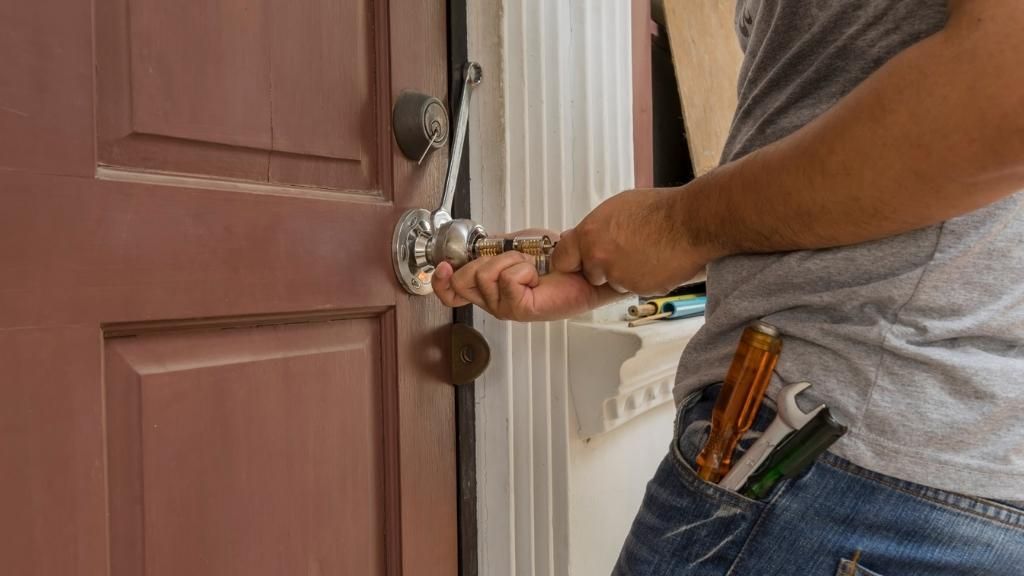How to Fix a Stuck Door Latch: 6 Effective Methods
Is your door latch giving you trouble, sticking when you try to open or close the door? It's a common annoyance that can disrupt your daily routine and compromise your home's security. But don't worry, fixing a stuck door latch is easier than you might think. In this guide, we’ll walk you through six effective methods to get your door latch working smoothly again. From simple lubrication to realigning your door, we’ve got you covered with practical solutions. Ready to fix that stubborn latch? Let’s dive in!
Understanding Door Latch Problems
Before diving into the fixes, it’s essential to understand what might be causing your door latch to stick. Common issues include:
- Misalignment: The latch and strike plate aren’t lining up properly.
- Dirt and Debris: Accumulation of grime within the latch mechanism.
- Wear and Tear: Components of the latch may have worn out over time.
- Loose Hinges: Hinges that are not tightly secured can misalign the door.
- Rust and Corrosion: Moisture can cause rust, leading to a sticking latch.
- Mechanical Failure: Internal parts of the latch may be broken or malfunctioning.

Method 1: Lubricate the Latch
Lubricating the latch is often the simplest and quickest fix for a stuck door latch. Here’s how to do it:
- Tools and Materials: Lubricant spray (like WD-40), cloth.
- Step-by-Step Guide:
- Remove any visible dirt or debris from the latch.
- Apply lubricant spray to the latch mechanism.
- Work the latch back and forth to distribute the lubricant.
- Wipe away any excess lubricant.
Method 2: Adjust the Strike Plate
Sometimes, the latch gets stuck because the strike plate is misaligned. Adjusting it can solve the problem:
- Tools and Materials: Screwdriver, hammer, chisel.
- Step-by-Step Guide:
- Inspect the strike plate for misalignment.
- Loosen the screws holding the strike plate.
- Adjust the strike plate to align with the latch.
- Tighten the screws and test the door.
Method 3: Tighten the Door Hinges
Loose door hinges can cause misalignment, leading to a stuck latch. Tightening them might resolve the issue:
- Tools and Materials: Screwdriver, drill.
- Step-by-Step Guide:
- Check the door hinges for any looseness.
- Use a screwdriver or drill to tighten the hinge screws.
- Ensure the door is properly aligned in the frame.
- Test the door latch to see if the issue is resolved.
Method 4: Clean the Latch Mechanism
A dirty latch mechanism can cause sticking. Cleaning it thoroughly can help:
- Tools and Materials: Cleaning solution, brush, cloth.
- Step-by-Step Guide:
- Remove the door latch mechanism from the door.
- Clean the latch mechanism with a cleaning solution and brush.
- Dry the mechanism thoroughly before reassembling.
- Reinstall the latch mechanism and test the door.
Method 5: Replace the Latch
If the latch is broken or worn out, replacing it is often the best solution:
- Tools and Materials: New latch, screwdriver, drill.
- Step-by-Step Guide:
- Purchase a compatible replacement latch.
- Remove the old latch from the door.
- Install the new latch following the manufacturer's instructions.
- Test the door to ensure the new latch works smoothly.
Method 6: Realign the Door
A door that’s out of alignment can cause latch problems. Here’s how to fix it:
- Tools and Materials: Level, shims, screwdriver.
- Step-by-Step Guide:
- Use a level to check the alignment of the door.
- If misaligned, insert shims between the door frame and the wall.
- Adjust the door hinges if necessary.
- Ensure the door is properly aligned and test the latch.
Call Us Any Time!






